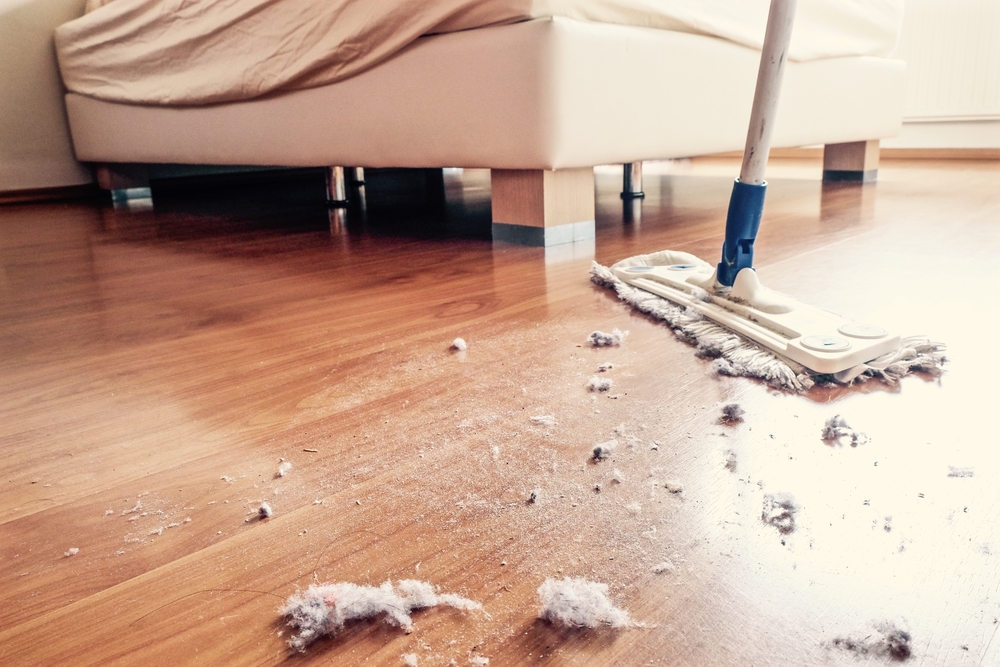The current meteoric rise in public concern and interest regarding air quality and healthy environments has created an opportunity for industry to market and promote a myriad of diverse products and services. Everything from scented candles and snake oils, to ozone generators and air fresheners are being advertised as the air quality answer to all our healthy home needs.
On average, Canadians spend 80% of our time indoors; a great deal of that time is spent in your own home. Controlling the air quality conditions of our work places can be difficult however; improving your healthy environment at home simply requires a basic understanding of how your home works.
Universally, homes behave as an integrated system, what happens in the basement, affects air quality upstairs. The definition of a healthy home is not about having more. It is about living with less: less humidity and moisture, less chemicals and odours, less particulates and dust. Reducing air quality concerns in our home means living with less irritants our bodies’ defense systems must address. Imagine if we were born with a “wheel barrel for environmental sensitivities”. Throughout our lives, each person loads their wheel barrel at a different pace (Environmental Exposure Level). Some people have the capacity to fill a larger wheel barrel of environmental sensitivities (Dose Response). Due to past environmental exposure, other people may not have room in their wheel barrel and may have difficulty handling the environmental burden (Multiple Chemical Sensitivity). The fundamental similarity between all wheel barrels is the universal benefit of environmental load reduction. We must seize every opportunity to reduce air quality and environmental irritants from our homes in an effort to keep our wheel barrel of sensitivities empty. If our environmental load is light weight, our capacity to shoulder unforeseen air quality exposures is increased.
If we are to adapt the “less load” philosophy to our own homes we must embrace some life style changes that promote healthy environments. We must be able to recognize the conditions that generate poor air quality and we must make the correct steps to improve them. Recognizing these conditions of poor air quality is the first step to improving your environment.
Air quality concerns can be divided into two main categories: chemical and biological. Chemical air quality concerns are introduced into your environment typically by “off gassing” of manufactured products and materials, cleaners, new furniture, construction materials, solvents, dry cleaning, air fresheners and by products of combustion. Biological contaminants are generated within the building environment, such as skin cells and fragments, dander, dust mites, pollen, bacterial, mold and viruses. These types of contaminants thrive in moist, damp environments. By controlling the humidity levels in most homes, the growth of some of these culprits can be minimized.
Once a homeowner has identified a number of indoor air quality contaminants in the home, a lifestyle change is required to remove them and subsequently to reduce the burden on our personal wheel barrel of environmental sensitivities. We should take the opportunity to reduce exposure to both the biological and chemical loads present in our living environments. This load reduction is not completed overnight. Instead, our lifestyle change should incorporate the “less is best” philosophy on a daily basis.
Four Strategies
There are four strategies to achieve this change: isolation, separation, ventilation, and filtration. The daily application of these strategies will reduce exposure to air quality contaminants, minimize the strain on each person’s wheel barrel of environmental sensitivities, and create a healthier environment.
“Isolation” is a strategy where the term source control applies. If we can identify a situation in the home contributing to poor air quality, the isolation strategy requires complete removal of that condition. For instance, if we’re storing a box containing moldy books, discard them. If we have a leaking pipe adding moisture to our environment, repair it.
“Separation” strategy may be storing strong or foul-smelling items in a sealed container. This contains and separates off-gassing or odorous items from the rest of the home. Items such as solvents, cleaners, and paint cans can be stored in a sealed plastic container for future use. Another example of separation is the use of waterproof membranes within the house foundation to prevent moisture or dampness from entering through the exterior walls.
“Ventilation” strategy, which means an exchange of interior air with exterior air, refers to the three types available to most homes. This strategy is a means of diluting the higher concentrations of airborne contaminants and moisture generated inside the living environment. Imagine our home represents a sealed glass aquarium we inhabit. Inside this aquarium is a constant sandstorm of very small particles we breathe (respirable suspended particulates – RSP). If we were to create an opening on one side of the aquarium and let fresh clean air in, and we were to place an exhaust fan on the other side of the aquarium blowing out, we would eventually dilute and exhaust the higher levels of RSP found inside the aquarium. This example is how we should perceive the benefits and necessity of a sound ventilation strategy in our own homes.
Effective ventilation can be achieved in three ways. The first is simply to open the windows and introduce fresh air. This is an excellent, easy method of achieving air dilution and air exchange. During cooler months, leaving windows open is no longer reasonable. The second means of ventilation relies on the “exhaust only” approach to air exchange. Range hoods and bathroom fans mechanically exhaust air from inside the home to outside through the fan mechanism. This exhaust-only fan system creates less air in the home and develops a slight negative pressure to the living environment. Fresh air is re-introduced to the home through cracks around windows, doors, the foundation, and ceiling. This type of exhaust-only ventilation is most common. New homes have building code standards that govern the size of exhaust-only devices when installed as the principle means of ventilation.
Lastly, the whole house ventilation system is an integrated system of balanced filtered air in and balanced air out, creating no pressure differentials within the home. These systems can be installed with “heat recovery” technology (HRV) to save the warm air from being exhausted. All three types of ventilation systems perform the same function: to remove airborne contaminants from inside the home environment, and to dilute the interior air through an exchange with outside air.
The fourth and final air quality improvement strategy should be the use of air filtration. Mechanically forcing household air through a quality furnace filter or filter media device serves the purpose of removing or entrapping airborne particles. Forced air furnace systems are an ideal way to filter household air on a continuous basis. Switch the furnace fan operation from “Auto” to “On” and have the furnace fan run continuously with a quality filter on your air furnace. If you do not have a forced air furnace, a stand alone HEPA (High Efficiency Particulate Arrestor) filtration device may help.
Although these air quality and healthy home recommendations may seem overwhelming, once you have embraced your healthy home lifestyle changes, the benefits are noticed immediately. Efforts should be made to reduce your environmental exposure load and ventilate your home at every convenient opportunity.
If you “isolate” moisture and remove the sources you are aware of; if you “separate” moisture and off-gassing chemical-based products; if you ventilate and dilute air quality conditions at every opportunity; and if you filter or scrub the home’s air continuously, you will live in a much healthier environment.
A great source of healthy home and air quality information can be obtained from Canada Mortgage and Housing Corporation (CMHC) library located at 700 Montreal Road or at their website www.cmhc-schl.gc.ca.
(As published in Healthwise Ottawa, Fall 2007)






